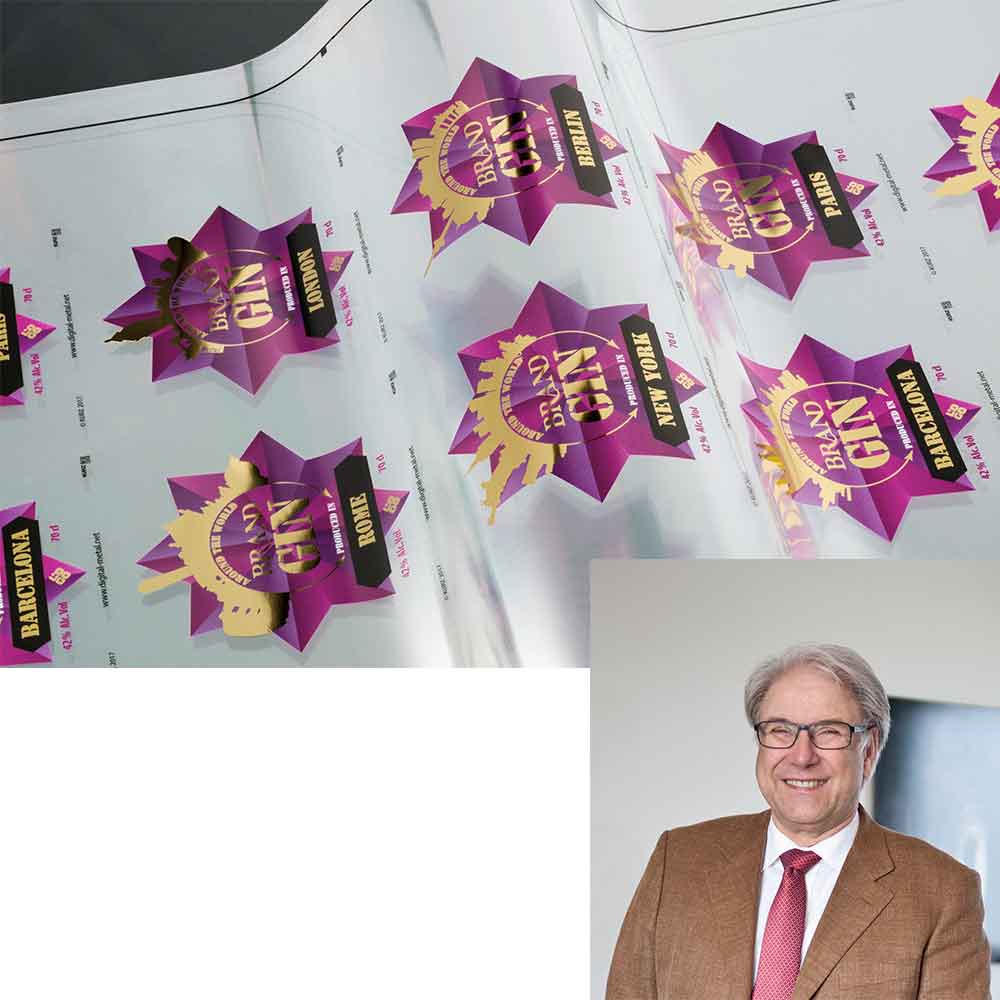
23/10/17 Industrial printing is omnipresent in everyday life. In a loose series of interviews, the VDMA Printing and Paper Technology Association presents industrial players from among its members. In this interview, Walter Kurz, Chairman of the Executive Board of LEONHARD KURZ Stiftung & CO. KG, talks about the upwards trend in printed electronics, about elegant connections between decoration and function as well as about special challenges for technology manufacturers in the industrial printing sector.
Mr. Kurz, what`s your definition of “industrial printing”?
Walter Kurz: It is the transfer of decorative or functional layers onto industrial goods by means of printing technology. They are upgraded with added information, design elements and more and more often also printed sensors and security functions. As a rule, industrial printing is just one stage in a superior production chain. We often act at the end of the chain so that we process nearly finished, high-quality products which requires utmost care in handling.
KURZ is very active in this sector. What does industrial printing mean to you – a
standing leg or rather a free leg? Kurz: We took our first steps in this market in the 1960s with the decoration of plastic parts. Over the years, industrial printing has clearly become a standing leg. This manifests itself in continuous growth, a consistently growing variety of processes and machines as well as the acquisition and integration of new members into the KURZ group. Supported by companies, such as PolyIC in the printed electronics sector or BURG DESIGN from Steyr with its strong standing in the automobile industry or our subsidiary KURZ Digital Solutions, we can continuously expand our competencies in this market. And this is absolutely necessary. Because industrial printing requires precision work. Every order comprises new specifications for design, the integration of functions, as regards substrates and geometries, and hence requires us to make specific adaptions to the machine requirements at the customers` site.
Who are these customers?
Kurz: A broad spectrum ranging from the automobile industry to the electronics industry and manufacturers of white goods, i.e., household appliances. Car manufacturers and their suppliers have been our customers since the 1970s, and they more and more favour industrial printing, be it for the surface finishing of radiator grilles with our films, the finishingof the interior which we improve using a direct injection moulding process or currently also future concepts for the interior design of e-cars and autonomous vehicles. In this sector, there is a demand for areas backlit with LEDs or OLEDs that change their colour with a swipe. Backlits are also up and coming in notebooks. And washing machine manufacturers favour the printed touch sensors of our subsidiary PolyIC. In most applications, it`s the elegant combination of decoration and function that counts.
Does the cooperation with the customers change when printing goes beyond the merely visual and haptic functions?
Kurz: What is required is intense cooperation, close project monitoring as well as lots of consulting and coordination. However, this also means that we are integrated into the total chain ranging from design to series production.
KURZ is a technology manufacturer and also produces coatings and foils. Are the recipes in industrial printing more complex than in graphics printing?
Kurz: The requirements are different. The properties required for graphics printing in highest precision at very high speeds differ from those required for special applications in industrial printing. In the latter area, the physical properties are of greater importance: Maximum abrasion resistance, weather resistance or permanently high-gloss foil-based kinegrams on banknotes. The challenges for our ink and coating development teams for graphics printing and industrial printing are on a par with each other.
KURZ offers, inter alia, digital finishing for digital printing and foil processes with genuine metal. Is the future of industrial printing purely digital?
Kurz: No, it isn`t. There is, of course, a development towards digital processes, but the development of the traditional printing methods does not stand still either. Take the makeready times; they are much shorter now. Methods such as offset printing will continue to play a leading role with higher production runs. Digital printing has its advantages for shorter runs or, for instance, modularly designed print applications. Nevertheless, the analogue and digital methods will continue to co-exist in industrial printing, too. The traditional printing methods are indispensable.
Market studies predict a strong global growth in industrial printing. Do your experiences confirm these high growth expectations?
Kurz: Yes, they do. We see strong growth in the automobile market and with regard to white goods. Of course, there are also segments where the development is less dynamic. But all in all, the demand for solutions that connect decorative printing with functional printing and sensor technology increases significantly. The same applies to the combination of sophisticated surface design and backlightings driven by energy-efficient lighting technologies.
Your company has been active in the printed electronics segment for nearly 15 years. Does this early involvement pay?
Kurz: Now I can answer this question in the affirmative. We have invested a lot and also had to accept setbacks through all these years. However, this stamina is paying off. We now successfully transfer the know-how we accumulated in not-so- brilliant segments to other areas.







